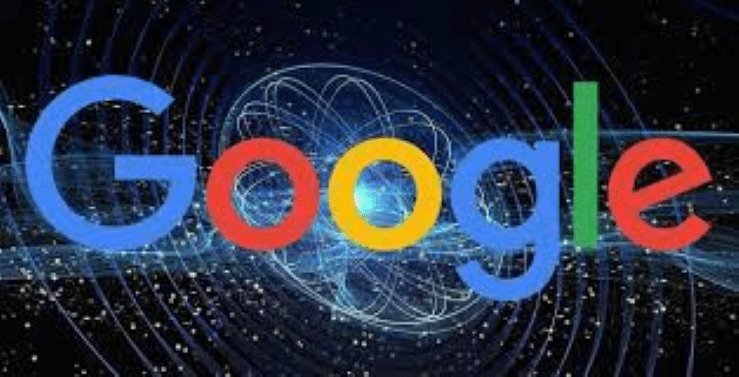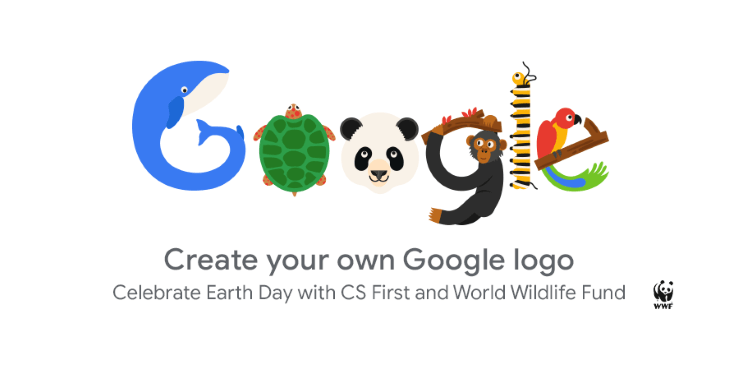Google Search Gets New Tools To Surface EV & Energy Info
Google is taking a significant step towards promoting sustainability and eco-conscious decision-making with its latest update. The company is introducing new tools to enhance the visibility of electric vehicles (EV) and energy-related information directly within Google Search results. This development holds great potential for shaping the future of transportation and energy consumption. In this article, we will delve into the details of these new features and their potential impact on users, the environment, and the broader energy landscape.
The Push for Sustainability
As the world grapples with the impacts of climate change, there is a growing urgency to transition towards more sustainable practices, particularly in the automotive and energy sectors. Electric vehicles are a pivotal component of this transition, offering a cleaner and more energy-efficient alternative to traditional internal combustion engine vehicles.
Google’s New Tools for EV & Energy Information
Google’s latest initiative is a significant stride towards sustainable mobility and energy consumption. The new tools aim to address key challenges faced by users interested in electric vehicles and sustainable energy sources. Let’s explore these tools in detail:
1. Comprehensive EV Charging Information:
One of the critical barriers to widespread EV adoption is the availability and accessibility of charging stations. Google’s new feature aims to address this by providing detailed information about EV charging stations directly within search results.
Users will be able to access real-time data on the availability of charging stations, along with information on charging speeds and compatible connector types. This level of detail can significantly ease concerns about range anxiety and make EV ownership more feasible for a broader audience.
2. Carbon Emissions Insights:
Understanding the environmental impact of energy consumption is crucial for making informed decisions about transportation and energy usage. Google is introducing a feature that provides information on the carbon emissions associated with different types of energy in a user’s area.
This tool will enable users to gain insights into the environmental implications of their energy consumption choices, helping them make more sustainable decisions.
How These Tools Work
Google’s approach involves integrating data from various sources to provide accurate and up-to-date information to users. This includes partnering with EV charging networks and aggregating data on charging station locations, availability, and compatibility. Additionally, Google will utilize its extensive mapping capabilities to provide accurate geospatial information.
For the carbon emissions insights feature, Google will leverage its existing knowledge of regional and national energy grids, combined with data on energy sources and emissions factors. This will enable them to estimate the carbon emissions associated with the production of electricity in a specific area.
Potential Impact
The introduction of these tools has the potential to bring about several positive changes:
1. Boosting EV Adoption:
By alleviating concerns about charging infrastructure, Google’s new tools can encourage more individuals to consider electric vehicles as a viable mode of transportation. This, in turn, contributes to reducing reliance on fossil fuels and lowering emissions.
2. Empowering Informed Choices:
Providing users with insights into the environmental impact of their energy consumption empowers them to make conscious decisions. This not only applies to vehicle owners but also to individuals and businesses looking to adopt cleaner energy sources.
3. Driving Demand for Renewable Energy:
With greater visibility into the carbon emissions associated with energy consumption, there may be an increased demand for renewable energy sources. This could potentially accelerate the transition towards a greener and more sustainable energy grid.
4. Supporting Sustainable Practices:
Google’s tools align with the broader global effort to combat climate change. By equipping users with information to reduce their carbon footprint, they contribute to a more sustainable future.
Challenges and Considerations
While these new tools hold immense promise, there are several challenges that need to be addressed. Ensuring the accuracy and reliability of data, especially in real-time scenarios, is crucial. Additionally, collaboration with various stakeholders, including EV charging networks and energy providers, will be essential to provide comprehensive and up-to-date information.
Conclusion
Google’s introduction of these new tools represents a significant milestone in the pursuit of sustainable transportation and energy consumption. By leveraging its extensive technological capabilities, Google is poised to play a pivotal role in accelerating the transition towards a more sustainable future. The impact of these tools extends beyond individual users, potentially influencing broader shifts towards cleaner energy sources and transportation methods. As these features roll out, they are likely to reshape the way we think about and interact with energy and transportation information in our daily lives.
Google Experiments With Desktop Discover Feed
Google is currently experimenting with bringing its Discover feed, a feature popular on mobile, to desktop users. The Discover feed offers personalized content recommendations based on a user’s interests and browsing behavior. By extending this feature to desktop, Google aims to provide a more seamless and consistent experience across devices. This move aligns with Google’s efforts to enhance user engagement and deliver relevant content to a wider audience. It also opens up new opportunities for publishers and content creators to reach users through the Discover feed on both mobile and desktop platforms.
If Google is indeed experimenting with a desktop version of the Discover Feed, here’s what it might entail:
Desktop Discover Feed:
1. Content Recommendations: Similar to the mobile version, a desktop Discover Feed could provide users with personalized content recommendations based on their interests and browsing history.
2. Engagement with Visual Content: It might feature visually appealing content, including articles, videos, and images, to engage users and encourage them to explore more.
3. Customization Options: Users may have the ability to customize their feed by indicating preferences or interests.
4. Integration with Search: The desktop Discover Feed could potentially be integrated with Google Search, offering users a seamless experience across platforms.
5. Algorithmic Recommendations: The feed could use algorithms to analyze user behavior and provide content that is likely to be of interest.
Significance of Desktop Discover Feed:
1. Enhanced User Experience: Providing a Discover Feed on the desktop version of Google could improve the overall browsing experience by offering relevant content directly on the homepage.
2. Increased User Engagement: By surfacing content that aligns with users’ interests, Google can potentially increase user engagement and time spent on the platform.
3. Competing with Social Media Feeds: This feature may help Google compete with social media platforms, which often rely on feeds to keep users engaged and returning for more content.
4. Diversifying Content Consumption: It offers users an alternative way to discover content beyond traditional search queries, potentially exposing them to a wider range of topics.
5. Expanding Advertising Opportunities: If implemented, this feature could open up new avenues for advertisers to reach their target audiences through promoted content within the Discover Feed.
Remember, if this is a recent development, it’s important to refer to official announcements or news from Google for the most accurate and up-to-date information on the desktop Discover Feed experiment.
Google Introduces Structured Data For Car Dealership Inventory
Google had not introduced structured data specifically tailored for car dealership inventory. However, it’s not uncommon for Google to introduce new features or updates after my last update.
If Google has indeed introduced structured data for car dealership inventory, this is a significant development for the automotive industry. Here’s how it could potentially work and why it’s important:
How Structured Data for Car Dealership Inventory Works:
1. Inventory Details: This structured data would likely allow car dealerships to provide detailed information about their inventory, including make, model, year, mileage, price, VIN, and possibly even additional features or specifications.
2. Location Information: It might also include location-specific data, allowing users to find dealerships and specific vehicles in their vicinity.
3. Availability and Status: Dealerships could potentially indicate the availability status of each vehicle (e.g., in stock, sold, on hold).
4. Rich Results in Search: By implementing this structured data, dealerships might be eligible for enhanced search results, known as rich results or rich snippets. This could display detailed information directly in the search results.
Significance of Structured Data for Car Dealerships:
1. Improved Visibility: Implementing structured data can enhance a dealership’s visibility in search results, making it easier for potential buyers to find relevant inventory.
2. Enhanced User Experience: Users searching for specific car models or specifications can quickly find relevant information without having to navigate through multiple pages.
3. Competitive Advantage: Dealerships that implement this structured data early could gain a competitive edge by providing more detailed and easily accessible information to potential buyers.
4. Facilitating Local Searches: For users looking for a specific car model in their local area, this structured data could be particularly valuable.
5. Better SEO Performance: Providing structured data in the format that search engines understand and prefer can lead to improved rankings and visibility.
6. Increased Click-Through Rates: Rich results tend to attract more attention and may lead to higher click-through rates compared to standard search results.
7. Potential for Integration with Other Platforms: This structured data could potentially be used in conjunction with other platforms or services related to automotive listings and sales.
Remember, if this is a recent development, it’s crucial to refer to Google’s official documentation and guidelines for implementing structured data for car dealership inventory to ensure compliance with their requirements and best practices.
Microsoft Earnings Call Highlights Latest In AI For Search & Ads
I don’t have access to real-time information or events that have occurred after that date. However, I can provide you with some general trends and highlights in AI for search and ads up until that point.
In recent years, Microsoft has been actively leveraging AI and machine learning in its search and advertising offerings. Here are some potential areas of focus:
1. AI-powered Search Relevance: Microsoft has been investing in improving the relevance of search results through the use of AI algorithms. This includes understanding user intent, context, and personalizing results.
2. Bing’s Intelligent Answers: Bing has been using AI to provide intelligent answers directly in search results, aiming to reduce the need for users to click through to a website for information.
3. Smart Bidding and Ad Campaign Optimization: In the advertising space, Microsoft Advertising (formerly Bing Ads) has been utilizing AI for smart bidding strategies. These strategies use machine learning to optimize bids for conversions, clicks, or other specified goals.
4. Audience Targeting: AI-powered audience targeting allows advertisers to reach specific demographics or user segments based on their behavior, interests, and characteristics.
5. Chatbots and Conversational AI: Microsoft has been active in developing conversational AI solutions, like their Azure Bot Service, which allows businesses to create intelligent, natural language interfaces for their applications.
6. Visual Search: This technology allows users to search for information using images. Microsoft’s AI capabilities have been employed to improve the accuracy and relevance of visual search results.
7. Voice Search and Assistance: With the rise of smart speakers and voice-activated devices, Microsoft has likely been working on improving the AI behind Cortana, their virtual assistant, to enhance voice search capabilities.
8. Ad Fraud Prevention: AI and machine learning can be used to detect and prevent ad fraud, which is a critical concern in the online advertising space.
Remember, the specifics of Microsoft’s latest developments in AI for search and ads For the most recent advancements, I recommend checking Microsoft’s official announcements, press releases, or reliable tech news sources.
New Google Maps Feature Highlights Wheelchair Accessible Places
Introduction
In a significant stride towards inclusivity, Google has introduced a groundbreaking feature on Google Maps, specifically designed to assist individuals with mobility challenges. The Wheelchair Accessible Places feature aims to provide invaluable information to users who rely on wheelchairs for their mobility. This innovative addition empowers them to plan their journeys with confidence, ensuring they can access various places comfortably. In this article, we’ll delve into the details of this new Google Maps feature and the positive impact it is poised to have on the lives of individuals with mobility needs.
1. Comprehensive Accessibility Information
The Wheelchair Accessible Places feature on Google Maps offers a wealth of information about locations’ accessibility status. This includes details on accessible entrances, restrooms, seating arrangements, and more. Such comprehensive information empowers individuals with mobility challenges to make informed decisions about the places they visit.
2. Easy Identification of Accessible Locations
Accessible places are now prominently marked on the Google Maps interface. Users can quickly identify them by looking for the universally recognized wheelchair icon, ensuring a seamless and hassle-free navigation experience.
3. User-Generated Content and Verification
Google has implemented a system that allows users to contribute to the accessibility information. Individuals can provide feedback regarding the accessibility of places they have visited, creating a collaborative environment for verifying and updating this critical information.
4. Integration with Transit Information
The Wheelchair Accessible Places feature is seamlessly integrated with transit information on Google Maps. This enables users to plan accessible routes that incorporate public transportation, ensuring a holistic approach to their journey planning.
5. Global Accessibility Impact
This feature is not limited to specific regions. Google Maps’ Wheelchair Accessible Places extends its coverage globally, with information available for a wide range of locations across the world. This inclusivity underscores Google’s commitment to making accessibility a universal priority.
6. Empowering Independent Exploration
For individuals with mobility challenges, the ability to independently explore and navigate their surroundings is of paramount importance. The Wheelchair Accessible Places feature empowers them to do just that, granting them the freedom to venture out with confidence.
7. Enabling Informed Decision-Making
Access to detailed accessibility information empowers individuals to make informed decisions about where to go and how to get there. This feature helps users plan routes and visits with the assurance that their mobility needs will be accommodated.
8. Fostering a More Inclusive Society
By prioritizing accessibility, Google is playing a pivotal role in fostering a more inclusive society. The Wheelchair Accessible Places feature goes a long way in breaking down barriers and ensuring that individuals with mobility challenges can participate fully in various aspects of life.
Google’s introduction of the Wheelchair Accessible Places feature on Google Maps marks a significant milestone in the journey towards a more inclusive and accessible world. This innovative addition empowers individuals with mobility challenges to navigate their surroundings with confidence and independence. By providing comprehensive accessibility information, Google is not only enhancing the lives of users but also sending a powerful message about the importance of inclusivity in today’s digital age. The impact of this feature is poised to resonate globally, making a positive difference in the lives of millions.
SEO News You Can Use: Google is Testing Search Results Without URLs
Google has been testing search results without displaying full URLs in its search engine results pages (SERPs) as part of its ongoing efforts to improve user experience and simplify search results. This change is part of Google’s broader initiative to streamline and refine the way search results are presented to users. Here’s what you need to know about this development:
1. Breadcrumb-Like URLs: In these tests, Google has been experimenting with displaying breadcrumbs instead of full URLs in search results. Breadcrumbs are a navigational aid that typically shows the hierarchical structure of a webpage, similar to a trail of categories leading to the page. Instead of displaying the full URL, the breadcrumb-style structure provides users with an understanding of where the page fits within a website.
2. Improved User Experience: Google’s goal with this change is to simplify the presentation of search results and make them more user-friendly. Displaying breadcrumbs can help users quickly assess the context of a page within a website, making it easier to determine the relevance of the search result.
3. Gradual Rollout: It’s important to note that Google often tests new features and changes with a subset of users before implementing them universally. As such, not all users may see search results without full URLs at this time.
4. Potential Impact on SEO: While the change in how URLs are displayed in search results may not directly impact SEO rankings, it could influence user behavior and click-through rates. Websites should continue to focus on optimizing their metadata, including titles and descriptions, as these elements play a key role in attracting users to click on search results.
5. Monitoring and Adaptation: Website owners and SEO professionals should monitor any changes in user behavior and website traffic resulting from this alteration in search results presentation. As Google continues to refine its SERPs, it’s important to adapt and optimize content and metadata accordingly.
6. Google’s Ongoing Evolution: Google frequently updates its search algorithms and presentation of search results to enhance user experience and better align with evolving user preferences. Staying informed about these changes and adapting SEO strategies accordingly is essential for online visibility and success.
Google’s testing of search results without displaying full URLs is part of its effort to simplify and improve the user experience. While it may not directly impact SEO rankings, it underscores the importance of optimizing metadata and adapting to changes in the search landscape to maintain a strong online presence.
Google Explains How it Organizes Information in Search
Google’s search algorithms are complex and constantly evolving to provide users with the most relevant and helpful search results. While I don’t have the exact details of the latest algorithm changes or updates, I can provide a general overview of how Google organizes information in search results:
1. Crawling and Indexing: Google’s search bots, often referred to as “Googlebot,” crawl the web to discover and index web pages. During the crawling process, Googlebot follows links from one page to another, indexing the content it finds.
2. Ranking Algorithms: Google uses a variety of algorithms to rank web pages in search results. The most well-known algorithm is PageRank, which evaluates the quantity and quality of links pointing to a page. However, Google employs hundreds of ranking factors to determine the relevance and authority of a page.
3. Relevance and Quality: Google’s main goal is to provide users with the most relevant and high-quality content in response to their search queries. The algorithms assess factors like keywords, user intent, content quality, relevance, user experience, and more.
4. User Intent: Google aims to understand the intent behind a user’s search query. It evaluates whether the user is seeking information, wants to make a purchase, or needs a specific service. This helps Google display results that match the user’s intent.
5. Featured Snippets: Google often provides featured snippets, which are concise summaries of the information from a web page that directly answer a user’s query. These are displayed at the top of search results and aim to provide quick and accurate answers.
6. Local Search: For location-based queries, Google’s algorithms consider the user’s location to provide results relevant to their geographic area. This is particularly important for local businesses and services.
7. Mobile-Friendly and Core Web Vitals: Google prioritizes mobile-friendly websites and pages that provide a good user experience, as well as those that meet Core Web Vitals metrics related to loading, interactivity, and visual stability.
8. Structured Data: Websites that use structured data markup (such as Schema.org) can provide additional context to Google about their content, helping search engines understand the content’s purpose and structure.
9. Freshness: Google considers the freshness of content, particularly for topics that require up-to-date information, such as news or recent events.
It’s important to note that Google’s algorithms are proprietary and not fully disclosed. The search landscape is continually evolving, and Google regularly updates its algorithms to improve the quality of search results and combat spammy practices. For the most accurate and up-to-date information about how Google organizes information in search, I recommend referring to Google’s official documentation and announcements.
Google: Keyword-Heavy Titles Not Against Our Guidelines
Google doesn’t explicitly penalize websites for using keyword-heavy titles, but there are some important considerations to keep in mind for effective SEO and user experience:
1. Relevance and User Intent: While using keywords in titles is important for SEO, it’s crucial that the titles remain relevant to the content and accurately reflect the page’s topic. Keyword stuffing or using irrelevant keywords can negatively impact user experience and rankings.
2. User-Friendly Titles: Titles are one of the first things users see in search results, and they play a significant role in click-through rates. Crafting titles that are clear, concise, and user-friendly can lead to higher engagement.
3. Search Engine Algorithms: Search engines, including Google, have become sophisticated in understanding context and user intent. Over-optimization or using too many keywords can be seen as an attempt to manipulate rankings and might not yield the desired results.
4. Long-Tail Keywords: Instead of focusing solely on highly competitive short-tail keywords, consider using long-tail keywords that are more specific to your content. These can attract more targeted traffic and result in higher conversions.
5. Title Length: While Google doesn’t explicitly penalize long titles, it’s a good practice to keep titles under 60 characters to ensure they’re fully displayed in search results. This helps users quickly understand the content.
6. User Experience: Titles should be crafted with users in mind. A clear and compelling title can lead to higher click-through rates, better engagement, and improved user satisfaction.
7. Natural Language: Use keywords in a way that fits naturally within the title. Titles should make sense and not appear as a random collection of keywords.
8. Mobile-Friendly: Ensure that your titles are mobile-friendly and display well on various devices, as a significant portion of searches are performed on mobile devices.
Remember that Google’s algorithms and guidelines can change over time. It’s always a good idea to stay updated with the latest information directly from Google’s official sources or reputable SEO resources. Additionally, prioritize providing valuable content to users, as search engines aim to deliver the best possible results for their users’ queries.
What Does a Zebra Sound Like? Ask Google
The animal kingdom’s symphony is as diverse as the creatures themselves, each species contributing a unique sound to the cacophony of nature. Zebras, those iconic striped equids, hold a certain enigmatic allure. Have you ever wondered, “What does a zebra sound like?” This essay delves into the intriguing world of zebra vocalizations and the role that Google plays in providing answers that connect us with the wildlife symphony.
Zebras: Striped Wonders of the Savanna
1. Zebra Diversity: Zebras, though visually similar, are represented by three species: the plains zebra, Grevy’s zebra, and the mountain zebra.
2. Social Nature: Zebras are known for their social behavior, often congregating in herds that provide safety in numbers.
The Melodic Language of Zebras
1. Vocal Repertoire: Zebras communicate through various vocalizations, including braying, barking, snorting, and a distinctive high-pitched call known as “whickering.”
2. Intra-Herd Communication: Zebras employ these sounds to convey emotions, alert others to danger, establish territory, and maintain cohesion within the herd.
The Curious Question: “What Does a Zebra Sound Like?”
1. Google’s Role as a Gateway: Google’s search engine serves as a gateway to information, answering queries about the enigmatic vocalizations of zebras.
2. Accessing Wildlife Sounds: Google allows users to explore audio recordings of zebra vocalizations, capturing the essence of these animals’ communication.
Unlocking the Auditory Archive: Online Resources
1. Wildlife Sound Databases: Online platforms like the Macaulay Library at the Cornell Lab of Ornithology house a treasure trove of wildlife sounds, including those of zebras.
2. Educational Portals: Websites and educational institutions curate and share zebra vocalizations to enhance our understanding of these remarkable creatures.
The Evolution of Zebra Sound Research
1. Scientific Curiosity: Researchers have delved into the world of zebra vocalizations, studying their context, variations, and meanings.
2. Technology’s Impact: Advancements in audio recording technology and analytical tools have expanded our ability to capture and study zebra sounds.
Interpreting Zebra Sounds: Communication and Beyond
1. Communication Dynamics: Zebra vocalizations unveil a world of communication intricacies within the herd, reflecting social bonds and behavioral cues.
2. Environmental Clues: Beyond communication, zebra sounds offer insights into their environment, helping us understand the auditory landscape of their habitats.
Cultivating Nature Appreciation and Conservation
1. Empathy Through Sound: Hearing zebra sounds fosters empathy and connection with these creatures, highlighting the importance of wildlife conservation.
2. Inspiring Future Naturalists: The accessibility of zebra vocalizations through Google and online resources encourages curiosity among future generations.
As we ponder the question, “What does a zebra sound like?” We are reminded of the intricate connections that bind us to the natural world. Google’s role in providing access to zebra vocalizations amplifies our understanding of these creatures’ communication and the symphony of the savanna. By opening the auditory gateway to nature’s melodies, we can embrace the beauty, complexity, and fragility of the animal kingdom, inspiring us to cherish and conserve the wildlife that shares our planet.
How to use Schema to create a Google Action
Creating a Google Action using Schema requires integrating structured data markup on your website or content to enable Google to understand and process your data effectively. Google Actions are voice-activated apps for Google Assistant that provide users with valuable information or perform specific tasks. Schema markup helps define the content and context of your data, making it easier for Google to comprehend and present to users through voice interactions.
Here’s a step-by-step guide on how to use Schema to create a Google Action:
1. Choose the Right Schema Markup:
Select a relevant Schema markup type that aligns with the content or service you want to provide through your Google Action. Common Schema markup types include “FAQPage,” “HowTo,” “Recipe,” “Event,” and more. Choose the one that best suits your use case.
2. Implement Schema Markup:
Add the Schema markup to the HTML of the web page that corresponds to the content you want to make available through your Google Action. This involves adding the appropriate Schema properties, such as name, description, URL, and other relevant details. You can manually add the markup using JSON-LD, microdata, or RDFa formats.
3. Validate Schema Markup:
Use Google’s Structured Data Testing Tool or Rich Results Test to validate your Schema markup. This step ensures that your markup is correctly implemented and will be interpreted accurately by Google.
4. Register Your Action on Google:
To create a Google Action, you need to create a project on the Google Actions Console. This is where you’ll define the conversational interface and interactions for your Action. Go to the Google Actions Console (https://console.actions.google.com/) and create a new project.
5. Define Intents and Utterances:
Within your Google Action project, define the intents (user requests) and associated sample utterances that users will say to invoke your Action. For each intent, map it to the appropriate Schema markup on your website.
6. Setup Dialog Flow (Optional):
You can use Dialog Flow, Google’s natural language processing platform, to build the conversational flow of your Google Action. Link your Dialog Flow project to your Google Action project to create a seamless interaction experience.
7. Test Your Google Action:
Test your Google Action using the simulator provided in the Google Actions Console. Ensure that the intents are correctly triggering and that the responses align with the structured data you’ve marked up.
8. Submit for Review:
Once you’re satisfied with the functionality and testing of your Google Action, submit it for review by Google. This process ensures that your Action meets Google’s quality and content guidelines.
9. Deploy Your Google Action:
After Google approves your Action, it will be available to users on Google Assistant-enabled devices. Users can invoke your Action by saying “Hey Google” or “Okay Google,” followed by the name of your Action and the intent you’ve defined.
Using Schema markup to create a Google Action enhances the relevance and accuracy of the information your Action provides to users. It also ensures a smooth and intuitive user experience. Remember that creating a Google Action involves both technical and conversational design aspects, so a well-rounded understanding of both is essential for a successful implementation.














